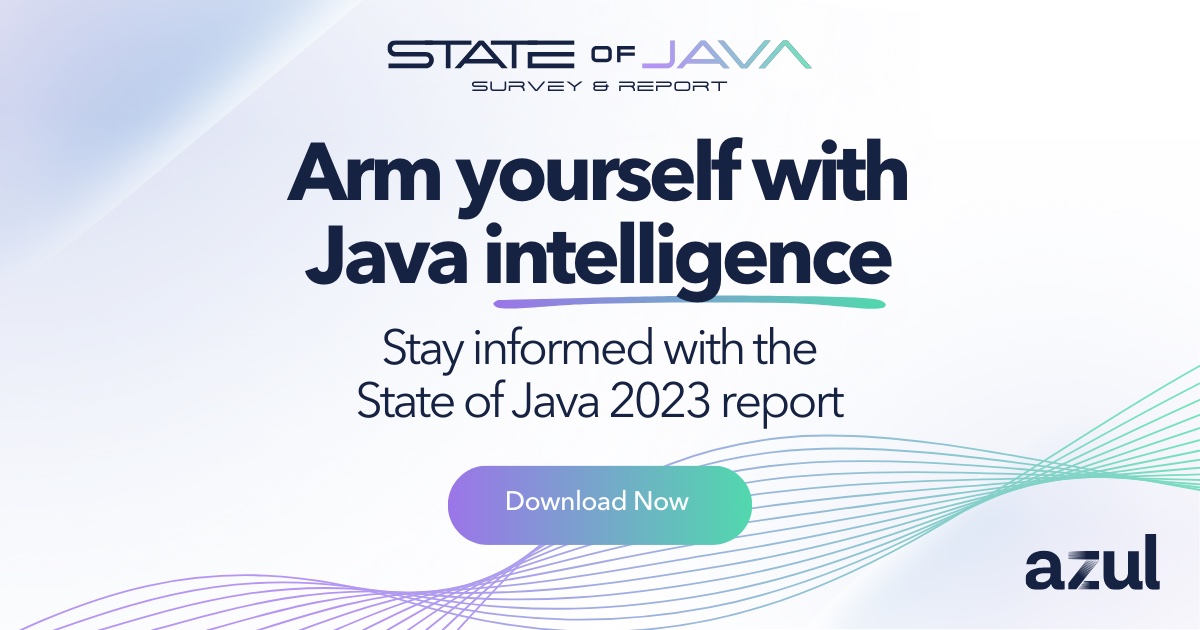
Azul State of Java Survey and Report 2023

A Revolutionary Approach to Java Application Security

Moving Security into the JVM

A CISO, or a Chief Information Security Officer, is a company executive responsible for overseeing, managing and mitigating security risks. While the general responsibilities remain consistent across most CISO roles, successful CISOs take initiative over security management by strategically investing in security technology, creating a company culture around security awareness, and by prioritizing responses to security threats. This role is a relatively new addition to both IT and company organizations, demonstrating that security is a critical priority to many organizations.
The CISO has general responsibilities of overseeing, managing and mitigating security risks. At the base level, their duties are to:
Successful CISOs go beyond these basic duties and work to:
The threat model for Java applications is changing, with modern risk coming from the widespread scope and usage of Java and library vulnerabilities. There are so many different versions of Java (both major and minor versions) and so many systems and libraries that it’s complex to know what everything is, where everything is, and if what’s “out there” poses any security risk. Modern attack payloads target third-party libraries, not just the JVM. The JVM’s overall attack surface has gone down, while the attack surface of libraries has gone up.
Failure to detect and patch known vulnerabilities in their Java application estates can expose organizations to significant impact and cost, including financial penalties running into the hundreds of millions of dollars, compromise of customer data, lower market capitalization, and turnover in executive staff.
In the Azul State of Java Survey and Report 2023, an independently run study of more than 2,000 Java users, 79% of participants said their company was affected by Log4Shell either directly or indirectly. In fact, 30% said they were victims of an attempt to exploit the Log4Shell vulnerability (17% unsuccessfully and 13% successfully).
CISOs are important for the prevention and mitigation of security risks. The Log4Shell incident made the detrimental impacts of security exposures in Java applications clear to enterprises in most industries. In 2022 alone there were more than 200 known vulnerabilities (CVEs) in third-party Java applications and components, many with the highest risk score, cutting across thousands of contributors. With cyber security issues occurring more frequently, CISOs are responsible for protecting their enterprises from these threats.
Common Vulnerabilities and Exposure (CVE) tools can be used to address security concerns. CISOs can adopt these tools to manage and address security threats in Java applications. CVE tools should take the burden of vulnerability management away from CISOs, freeing up their time and allowing them to focus on other important security objectives.
Rather than running during production, most CVE tools run intermittently to locate vulnerabilities in Java applications. These CVE tools often fail to detect all known vulnerabilities, leaving enterprises exposed to potential threats. Existing approaches leave a critical gap in security for Java applications.
Many CVE tools use an agent to oversee security management in Java applications. These CVE tools introduce a new piece of software into your application infrastructure. These agents can slow application performance and must be installed, configured, and maintained.
Because most modern scanning tools target applications that exist in production, even if they don’t run, they produce an overwhelming number of false positives.
Azul Vulnerability Detection makes security a byproduct of simply running your Java code, while also limiting false positives and improving the accuracy of vulnerability management. This allows CISOs to focus on security priorities beyond vulnerabilities in Java applications. Investments in vulnerability management are important so that incidents like Log4Shell remain problems of the past and not experiences in our future.
Azul Vulnerability Detection runs in the JVM, so it knows instantly when the vulnerability is introduced and does not have to wait until the next scan to alert you. Our JVM, Azul Platform Prime, delivers better overall performance with greater consistency for your revenue generating applications. This means that investing in Azul Vulnerability Detection will enhance the performance of Java applications while simultaneously protecting your enterprise from security risks.
Continuously detect known vulnerabilities
in your Java applications in production.
